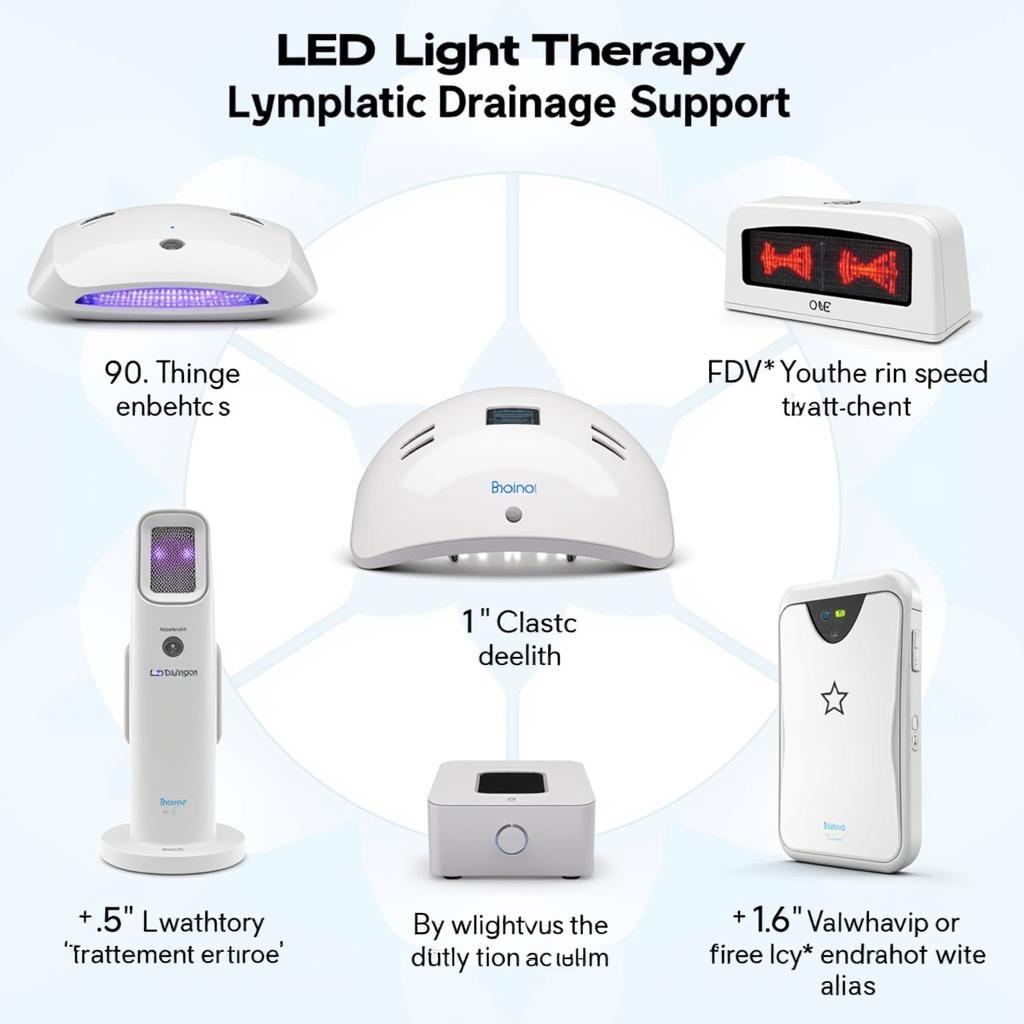Red and near-infrared (NIR) LED light therapy are often discussed in relation to improving lymphatic flow. This exploration delves into the science behind this claim, examining the potential benefits, usage, and important considerations surrounding this increasingly popular therapeutic modality.
Understanding the Lymphatic System and Its Importance
The lymphatic system plays a crucial role in maintaining overall health. It’s a network of vessels and nodes that act as the body’s waste removal system, carrying lymph fluid, which contains waste products, toxins, and excess fluid, away from tissues and back into the bloodstream. A healthy lymphatic system is essential for immune function, fluid balance, and overall well-being. When lymphatic flow is compromised, it can lead to swelling, fatigue, and increased susceptibility to infections.
How Light Therapy May Influence Lymphatic Flow
Red and NIR light therapy work by delivering photons of light to the body’s tissues. These photons are absorbed by chromophores within the cells, particularly the mitochondria, the powerhouses of the cells. This absorption stimulates cellular energy production (ATP) and can trigger a cascade of beneficial biological effects, including reduced inflammation and improved circulation. While the direct impact on lymphatic flow isn’t fully understood, some studies suggest that light therapy can promote vasodilation, the widening of blood vessels, which may indirectly support lymphatic drainage. Further research is needed to fully elucidate the mechanisms involved.
Red Light vs. Near-Infrared Light: What’s the Difference?
Both red and NIR light fall within the therapeutic window of the electromagnetic spectrum. Red light (typically 630-660nm) penetrates the skin’s surface layers, making it beneficial for addressing skin concerns and promoting wound healing. NIR light (typically 780-890nm) penetrates deeper into the tissues, potentially reaching muscles, joints, and deeper lymphatic vessels.
Potential Benefits of Red and NIR Light Therapy for Lymphatic Health
While more research is necessary, some potential benefits of red and NIR light therapy for lymphatic health include:
- Reduced Swelling: Light therapy’s anti-inflammatory effects may help reduce swelling associated with lymphatic congestion.
- Improved Circulation: Enhanced blood flow may indirectly support lymphatic drainage.
- Enhanced Immune Function: By supporting lymphatic drainage, light therapy may contribute to a stronger immune response.
- Pain Relief: The anti-inflammatory effects may also help alleviate pain associated with lymphatic issues.
Choosing the Right LED Light Device
Selecting an appropriate LED device is essential for effective light therapy. Look for devices that emit red and/or NIR light within the therapeutic wavelengths (630-890nm). Consider the treatment area and choose a device with the appropriate size and power output.
“Choosing the correct wavelength and dosage is crucial for maximizing the benefits of light therapy,” says Dr. Amelia Hernandez, a leading expert in photobiomodulation. “Consulting with a healthcare professional can help determine the appropriate protocol for individual needs.”
 Choosing the Right LED Device for Lymphatic Drainage
Choosing the Right LED Device for Lymphatic Drainage
Practical Application and Precautions
When using LED light therapy for lymphatic support, consistency is key. Follow the manufacturer’s instructions carefully and consult with a healthcare professional for personalized guidance. Avoid using the device over open wounds or areas with active infections.
Integrating Light Therapy into a Holistic Approach
Light therapy can be a valuable addition to a comprehensive approach to lymphatic health. Combining light therapy with other strategies like exercise, dry brushing, and a healthy diet can further enhance lymphatic flow and overall well-being.
“Light therapy isn’t a magic bullet,” advises Dr. Michael Chen, a certified lymphedema therapist. “It’s most effective when used in conjunction with other lifestyle modifications that support lymphatic health.”
Conclusion
Red and NIR light therapy hold promise for improving lymphatic flow, although more research is needed to solidify these findings. While it may not be a standalone solution, incorporating light therapy into a comprehensive wellness plan can potentially support lymphatic health and overall well-being. Remember to consult with a healthcare professional before starting any new therapy. What color LED light is used for improving lymphatic flow? Red and NIR are the key wavelengths to consider.
FAQ
- Is LED light therapy safe? Generally, yes, but follow manufacturer instructions and consult with a healthcare professional.
- How often should I use light therapy? This depends on the device and your individual needs.
- Are there any side effects? Side effects are rare but can include mild skin irritation.
- Can I use light therapy if I have a medical condition? Consult with your doctor first.
- How long does it take to see results? Results can vary, but some people notice improvements within a few weeks.
- What is the cost of LED light therapy devices? Prices vary depending on the device’s features and capabilities.
- Where can I purchase a reliable LED light therapy device? Consult with a healthcare professional for recommendations.
Common Scenarios and Questions
- Scenario: Swelling in legs after prolonged standing. Question: Can light therapy help reduce this swelling?
- Scenario: Recovery after surgery. Question: Can light therapy help with lymphatic drainage and healing?
- Scenario: Chronic fatigue. Question: Can light therapy support lymphatic function and improve energy levels?
Further Reading and Resources
- Articles on lymphatic health and light therapy
- Links to relevant studies and research papers
Need assistance? Contact us at Phone: 0373298888, Email: [email protected] or visit us at 86 Cau Giay, Hanoi. Our customer service team is available 24/7.

